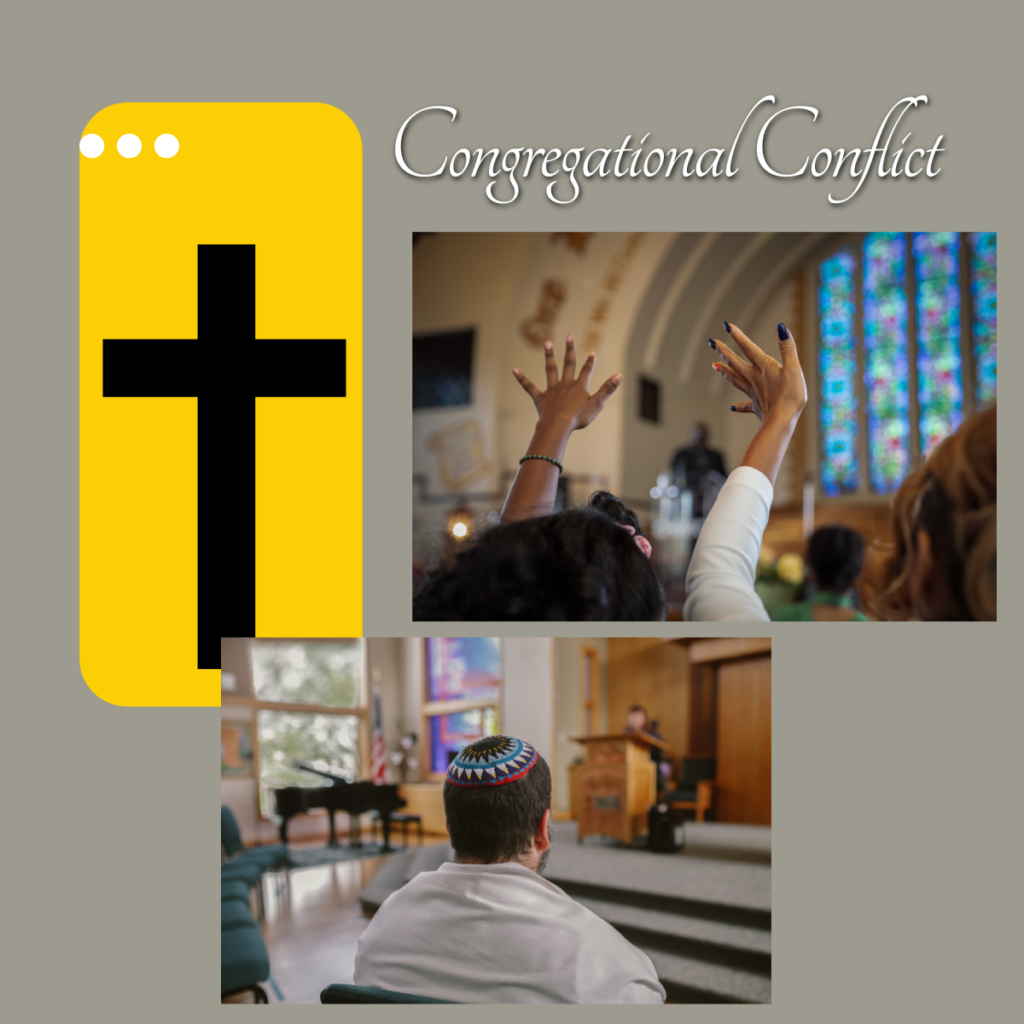
When Conflict Breaks the Flock: Resolving Disputes in Churches, Temples, and Organizations
Conflict in organizations is inevitable. Whether in businesses, nonprofits, or places of worship, people bring different perspectives, needs, and expectations that sometimes clash. Left unresolved, these tensions can erode trust, lower morale, and push talented leaders out the door.
According to a recent article in Christianity Today, more pastors than ever are leaving the ministry over church conflict. Many pastors feel caught between factions—some congregants believe leadership dismisses their opinions, while others resist addressing hard issues altogether. A report from Hartford found that 72% of U.S. churches experienced conflict in the fall of 2023. That’s a significant increase from 61% in early 2023 and 64% in 2020. With numbers like these, it’s clear that unresolved tensions aren’t limited to boardrooms or city halls; they are also affecting faith communities.
Why Conflict Happens in Organizations
At its core, conflict in any organization tends to stem from:
Differing Values and Priorities – People may agree on a mission but disagree on how to get there.
Power Struggles – Leadership dynamics, whether in an office or a church, can create tension when people feel unheard or overruled.
Communication Breakdowns – Misunderstandings, unclear expectations, or lack of transparency can fuel frustration.
Resistance to Change – Organizations that resist adaptation—whether to new leadership, policies, or cultural shifts—often experience internal discord.
Places of worship are no exception. Tensions rise when congregants feel their voices don’t matter or struggle with change. Meanwhile, pastors are often left to navigate these disputes without sufficient support.
Strategies for Conflict Resolution
Resolving conflict doesn’t mean eliminating disagreement. It means creating a structure that allows for constructive dialogue and solutions. Here are a few key strategies:
1. Create Space for Open Dialogue
Many conflicts worsen because people don’t feel heard. Organizations—like churches—can establish regular forums for discussion, where people can voice concerns in a structured way. Having a neutral facilitator in these conversations can prevent them from devolving into personal attacks.
2. Clarify Roles and Decision-Making Processes
One primary source of tension in churches, temples, and businesses alike is confusion over who makes decisions and how input is valued. Transparency about leadership roles, authority, and decision-making processes can reduce misunderstandings and resentment.
3. Encourage a Problem-Solving Mindset
Too often, organizations focus on assigning blame rather than seeking solutions. Shifting the mindset from “who’s right” to “how do we move forward” can be transformative. This approach encourages compromise and creative problem-solving rather than deepening divisions.
4. Engage a Neutral Third Party
Sometimes, internal dynamics make it difficult to resolve conflicts without outside help. A trained conflict resolution professional—whether a mediator or an organizational consultant—can bring a fresh perspective and guide difficult conversations.
5. Address Conflict Early
Conflict doesn’t go away on its own. When left unchecked, it festers, leading to more dramatic fallout. Encouraging leaders to address small disagreements before they escalate can prevent larger crises.
A Call for Proactive Conflict Resolution
Churches and other organizations don’t have to be places of division and burnout. By prioritizing structured dialogue, clarity, and problem-solving, they can build healthier communities where people feel valued and heard. Conflict will always be part of any group, but how it’s handled determines whether it strengthens relationships or fractures them.
Sarah Hannah-Spurlock is a Florida Supreme Court-certified Family, County, and Circuit Mediator with over 25 years of experience serving in local communities.
